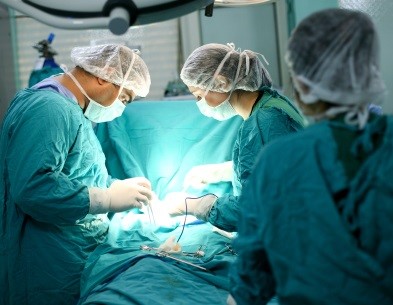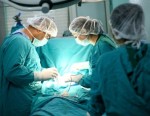Studies on Migraine Surgery Side Effects

 Americans desperately seeking relief from migraine headaches can spend $10 to 15 thousand on so-called migraine trigger site “deactivation” surgery (MTSDS).
Americans desperately seeking relief from migraine headaches can spend $10 to 15 thousand on so-called migraine trigger site “deactivation” surgery (MTSDS).
However, the few medical studies that support this procedure are now being called into question. In an unpublished review presented in Los Angeles last week at the American Headache Society’s annual meeting, Dr. Paul Mathew of Brigham and Women’s Hospital in Boston suggested that two studies backing the procedure were seriously flawed, and pointed out that “permanent side effects [from the surgery] are not uncommon.”
Migraine surgery side effects
Two studies that support the surgery were reviewed by a research team led by Dr. Mathew, a neurologist and headache expert. One studied involved 75 patients, with 49 receiving surgery and 26 receiving “sham surgery” as a kind of control. The second followed 79 patients in the five years after their surgery.
The researchers concluded that both studies had serious methodological drawbacks. In the first study 84 percent of patients who underwent surgery claimed a 50 percent reduction in migraines; however, 58 percent of those who underwent the “sham surgery” also made such claims, calling into question the accuracy and relevance of the study overall. In both studies, Mathews and his team concluded, the criteria for selection and for “success” were unclear, and factors such as medication use were not considered as part of the analysis.
Mathew also stressed that such surgeries carry risks in addition to offering dubious treatment. For instance, many patients report itching and numbness in the areas where the surgeries were carried out. In some patients, pain may actually worsen as a result of the procedure. The surgical treatments can be expensive and are rarely covered by insurance plans.
Trigger “deactivation” surgery for migraines
Mathews joints other neurologists in expressing skepticism about trigger “deactivation” surgery, a technique pioneered by plastic surgeon Dr. Bahman Guyuron. The Ohio plastic surgeon found that some of his patients reported migraine relief after undergoing “facial rejuvenation” surgery.
Plastic surgeons subsequently led the field in offering such surgeries, which involve moving muscle segments from the forehead or back of the neck, a portion of the trigeminal nerve (which runs from the brain to the face and mouth), or some tissue from the interior of the nose. Surgeons theorize that “triggers” for the migraine headaches may be located in these areas. In some cases, such surgery is presented as a “cure” in treatment centers across the country.
MTSDS based on unproven, controversial theory
Headache specialists have noted that the theory behind MTSDS runs counter to what is otherwise known about the cause of migraines, in which triggers (including certain foods, hormonal fluctuations, or sleep deprivation) that can set of an attack appear to stem from areas in the brain itself and not from external locations on the face, neck, or head.
Mathew speculates that in cases where the surgery appears to be working, the placebo effect may be involved. In a limited number of cases, he also believes that migraines may have been the result of a compressed nerve; in these cases, surgery might have reduced pressure on the nerve as well as the resultant headaches.

